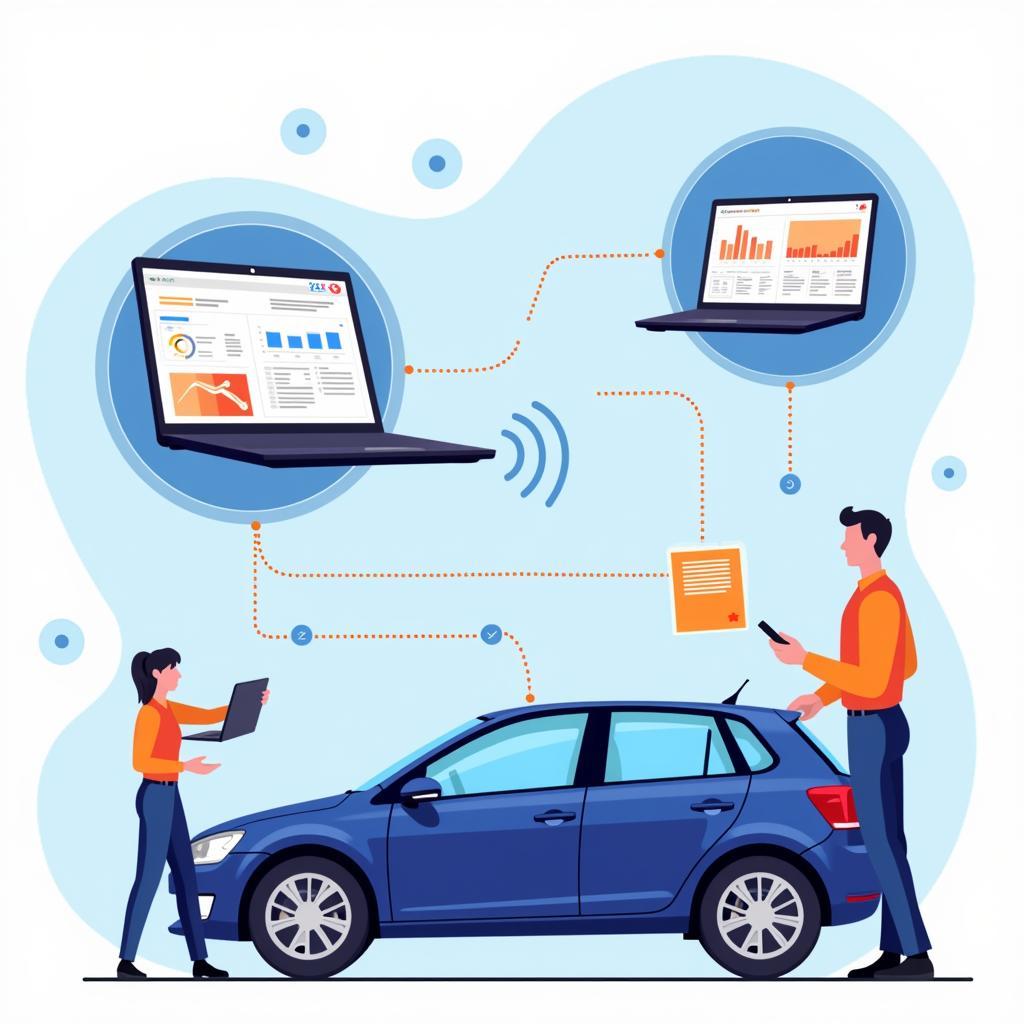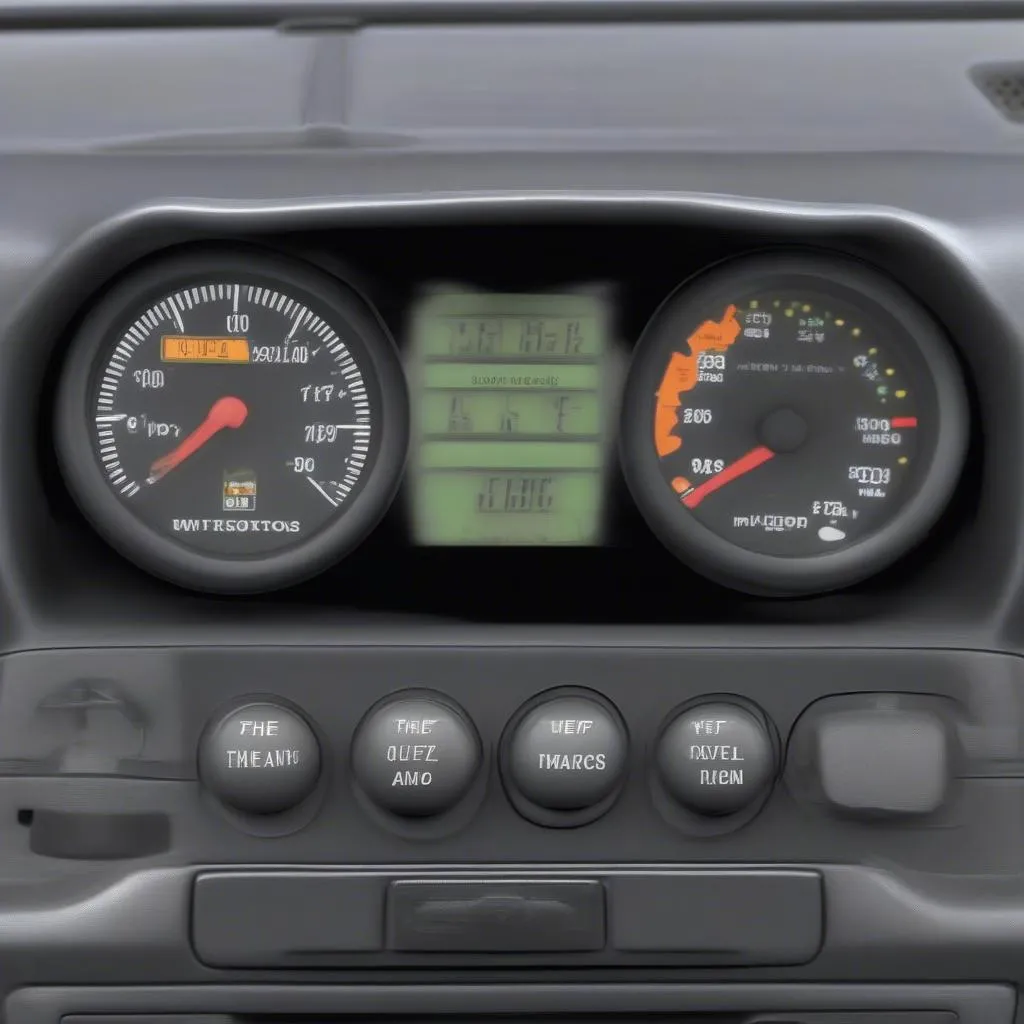A glowing brake warning light on your dashboard can be a nerve-wracking experience. It signals that something might be wrong with your braking system, requiring immediate attention. While several reasons can cause this, understanding them is crucial to ensuring your safety and addressing the issue effectively.
Common Reasons Your Brake Warning Light Stays On
Several factors can trigger the brake warning light, and identifying the root cause is the first step towards resolution. Here are some common culprits:
- Low Brake Fluid Level: This is the most common culprit behind an illuminated brake warning light. Brake fluid is essential for transmitting force when you press the brake pedal. A leak in the system can lead to a drop in fluid level, triggering the warning light.
- Worn Brake Pads: Brake pads are designed to wear down over time. When they reach a certain thinness, a sensor (wear indicator) comes into contact with the brake rotor, triggering the warning light.
- Faulty Brake Light Switch: Your brake lights and brake warning light system are often linked. A malfunctioning brake light switch can disrupt this connection, leading to a constantly illuminated warning light even if your brakes are functioning correctly.
- ABS Issue: Modern vehicles come equipped with Anti-lock Braking Systems (ABS) for enhanced safety. A problem within the ABS module, sensors, or wiring can trigger the brake warning light.
- Master Cylinder Problems: The master cylinder plays a vital role in distributing brake fluid to all wheels. If it malfunctions due to internal leaks or other issues, your brake warning light might illuminate.
Diagnosing the Problem
Pinpointing the exact cause of the brake warning light requires a systematic approach. Here’s a step-by-step guide:
- Check Your Brake Fluid: Park your car on a level surface and locate the brake fluid reservoir. Most reservoirs have a translucent body allowing you to visually inspect the fluid level without opening the cap. Ensure it’s between the “Min” and “Max” markings.
- Inspect Your Brake Pads: If possible, take a look at your brake pads. If you see less than ¼ inch of friction material, they likely need replacement.
- Test Your Brake Lights: Have a friend press the brake pedal while you check if the brake lights illuminate. If they don’t, it could indicate a faulty brake light switch.
What To Do if Your Brake Warning Light Stays On
If your brake warning light remains illuminated after performing the initial checks:
- Do Not Drive Your Car: Continuing to drive with a potential brake system issue can be extremely dangerous.
- Seek Professional Help: Contact a qualified mechanic specializing in automotive electrical diagnostics and remote software solutions. These professionals can accurately diagnose the problem using advanced tools and potentially resolve software-related issues remotely.
 Remote Car Diagnostics
Remote Car Diagnostics
Benefits of Remote Diagnostics and Software Solutions
Opting for a service provider offering remote diagnostics and software solutions for brake issues can provide numerous benefits:
- Faster Diagnosis: Remote diagnostics can quickly identify the root cause, saving you time and potential trips to the mechanic.
- Cost-Effective: Remote solutions can often address software-related issues without requiring physical part replacement, potentially saving you money.
- Convenience: You can have your car diagnosed and potentially repaired from the comfort of your home or office.
Frequently Asked Questions
1. Can I drive a short distance with the brake warning light on?
It’s highly discouraged to drive with the brake warning light on. Even short distances pose a significant risk.
2. How much does it cost to fix a brake warning light issue?
The cost can vary greatly depending on the underlying cause. A simple brake fluid top-up might cost a few dollars, while a complete brake system overhaul can run into hundreds or even thousands.
3. How often should I check my brake fluid?
It’s a good practice to visually inspect your brake fluid level at least once a month.
4. Can a bad battery cause the brake warning light to come on?
While uncommon, a severely weak battery can sometimes cause erratic dashboard light behavior, including the brake warning light.
5. Are there different types of brake warning lights?
Some vehicles might have separate warning lights for parking brakes and ABS issues in addition to the general brake warning light.
 Car Dashboard Warning Lights
Car Dashboard Warning Lights
Conclusion
Ignoring a glowing brake warning light is never a risk worth taking. By understanding the potential causes and taking prompt action, you can ensure your safety and keep your vehicle running smoothly. Remember, professional diagnostics and timely repairs are crucial for addressing any underlying issues and preventing further damage.


